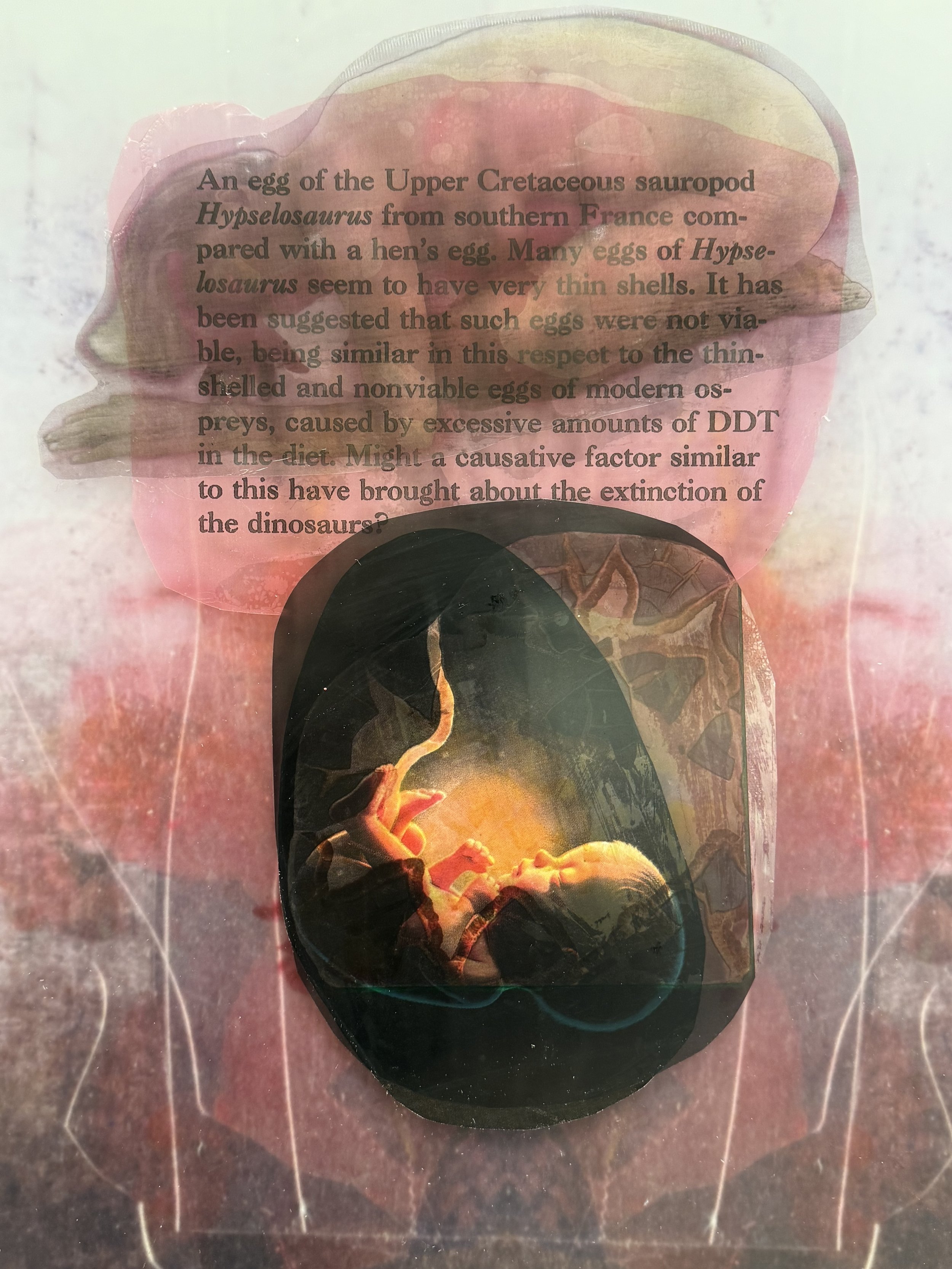Cube One
An egg of the Upper Cretaceous sauropod Hypselosaurus from southern France compared with a hen's egg. Many eggs of Hypselosaurus seem to have very thin shells. It has been suggested that such eggs were not viable, being similar in this respect to the thin shelled and nonviable eggs of modern ospreys, caused by excessive amounts of DDT in the diet. Might a causative factor similar to this have brought about the extinction of the dinosaurs?
Whenever and wherever the discussion is concerned with dinosaurs the inevitable question arises: why did they become extinct? It is a good question for which there is no satisfactory answer. Before exploring it, let us look at the facts of the extinction of the dinosaurs.
As we have seen, the dinosaurs of late Cretaceous age lived throughout the world in numbers and variety that had never been approached by their predecessors.
Original collage of found images, drawing, craypas, oil and acrylic paints
H 34"50 x W 70" (original artwork) $30,000.
They dominated the continents as the continents never before had been dominated and it would seem that they were so securely established on the earth as to continue for ages into the indefinite future. Then they became extinct, with a geological abruptness that cannot be doubted. it is all in the fossil record.
Thus in many parts in of the world the bones of dinosaurs are found sediments of latest Cretaceous age, while in the earliest post-Cretaceous sediments, of Paleocene age no dinosaur bones are to be found. To be sure, there have been in instances





